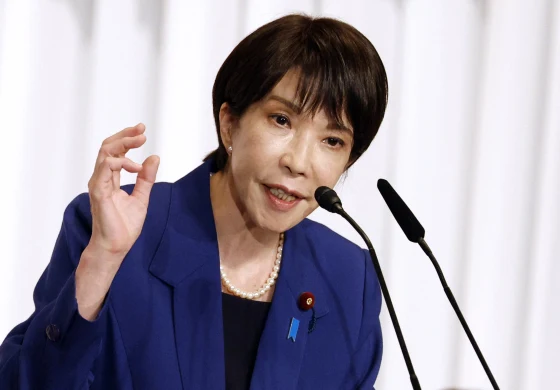Tokyo pursues multi-year targets to lift domestic investment
Japan’s PM Takaichi signals fiscal flexibility as Nikkei 225 (N225) and JGB yields respond to investment-led growth plans, targeting JPY 4.8 trillion infrastructure and digital spending to stabilize GDP around 1.0–1.5%.

Japan’s policy trajectory is entering a subtle but significant inflection point as Prime Minister Sanae Takaichi signaled a pivot from rigid annual primary-balance targets toward multi-year fiscal planning aimed at stimulating investment and domestic demand. This adjustment reflects Tokyo’s pragmatic recognition that structural headwinds—an aging population, stagnating consumption, and declining workforce participation—cannot be fully offset by monetary accommodation alone. For the fiscal context, Japan’s Gross Domestic Product (GDP) growth slowed to 1.1% year-on-year in the third quarter of 2025, confirming persistent demand weakness.
While headline inflation, measured by the Consumer Price Index (CPI), rose modestly to 2.1% year-on-year in Q3 2025, it remains below the Bank of Japan's (BOJ) 2.5% target when core measures that exclude volatile items are considered. By shifting fiscal discipline toward a multi-year horizon, the government now intends to deploy capital spending more flexibly, especially in green infrastructure, digital transformation, and regional revitalization projects.
The mechanism tightens the coordination between the government and the central bank. Loosening annual targets permits the Ministry of Finance to accelerate public investment, inject liquidity into strategic sectors, and coordinate with the BOJ’s ongoing yield-curve control operations. Capital expenditure in targeted areas is expected to rise by roughly JPY 4.8 trillion in the Fiscal Year (FY) 2026, which is equivalent to approximately 0.9% of Japan's 2025 calendar year GDP, thereby signaling a material demand boost.
Private sector confidence responds positively to this government certainty, especially among domestic construction and technology firms such as Obayashi (1802.T) and Fujitsu (6702.T), which stand to benefit directly from government-backed projects. Additionally, this more flexible fiscal framework supports small and medium-sized enterprises through indirect channels like public-private partnerships, targeted tax incentives, and infrastructure-related supply chain activity.
Financial markets have already priced in this shift with a modest steepening of the Japanese Government Bond (JGB) curve, where the 10-year yield rose to 0.57% from 0.49% last month, reflecting expectations of slightly higher issuance volume and eventual inflation pressure. The Yen (JPY=X) remains stable near 147 per U.S. Dollar, suggesting cautious optimism that is tempered by external uncertainties, including potential US Federal Reserve rate adjustments and global commodity price volatility.
Equity indices, particularly the Nikkei 225 (N225), have incorporated this narrative, with infrastructure, materials, and technology names showing relative outperformance of 4–6% over the past quarter, signaling capital allocation toward beneficiaries of domestic stimulus.
Risks are evident, and the policy signals a deepening commitment to unconventional stimulus. Looser fiscal targets could trigger criticism regarding debt sustainability, particularly as Japan’s gross public debt remains above 260% of GDP, one of the highest globally. Execution risk is also material: projects must avoid cost overruns and inefficiencies to translate planned spending into tangible growth and consumption gains.
Nonetheless, if capital allocation proves disciplined, consumption may accelerate modestly toward 1.5–2% annual growth, while fixed investment could contribute 0.6–0.8 percentage points to GDP by mid-2026. Forward-looking metrics, specifically corporate capex intentions surveys and regional retail sales data, will provide critical confirmation of the policy’s traction by the end of Q2 2026.





